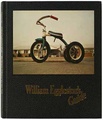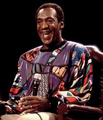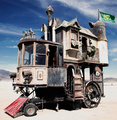This article talks about paperweights that were created using pinchbeck, or fake gold, noting their production processes and the materials used, and describing some specific examples. It originally appeared in the November 1945 issue of American Collector magazine, a publication which ran from 1933-1948 and served antique collectors and dealers.
An insurance broker picks up his telephone, and recognizes the voice of one of his clients, a woman who is a collector of old glass paperweights. She says that on Thursday of this week she will ship to New York a package containing a number of her weights, and she wants them “covered” for the period of time they will be out of her hands. She mentions a sum of money which she considers to be a fair valuation, and adds: “You may be a little surprised at the high value I have put on them, but they are my very choicest Pinchbeck items.”

Illustration I: Queen Victoria: In this pinchbeck paperweight the Queen's likeness as a young woman is done in natural colors and in high relief.
The broker does not argue, for he has learned from experience that the lady knows her paperweights. But we can hardly blame him for turning to an associate after the conversation is over with an air of puzzlement:
Pinchbeck! What does pinchbeck mean to you? If someone mentions pinchbeck jewelry, doesn’t the word mean jewelry that is cheap, shoddy, trashy? Hm! From this valuation, I should say that pinchbeck paperweights are not necessarily cheap!
What our business man says is true. The term pinchbeck is generally one that is charged with contempt. It carries something of a suggestion of fakery — of the cheap imitation. Curiously enough, however, the connotation of trashy does not apply — or, at least, it does not necessarily apply today — to the adjective when it is used to describe a particular class of paperweights.
On the contrary, the term has a decidedly respectable sound in the ears of many collectors; and, while it may still be a long way from the aristocratic ring of Baccarat or Clichy or St. Louis, it has long since begun to hold up its head, and no one can say how far it may go. To understand how all this came about, we must go back into history.
In the 18th Century, Christopher Pinchbeck, a London watchmaker, used an alloy of 90 per cent copper and 10 per cent zinc to produce an imitation gold, or pinchbeck, as it eventually came to be called. This alloy was used in making parts of watches and cheap jewelry.
The bogus-gold jewelry was highly popular during the early years of the reign of Queen Victoria, and the demand for it was widespread among the peasant classes of Europe. Since it was cheap, it was worn profusely in even the poorest villages, and it naturally came to be scorned by those who could afford genuine gold jewelry; and, before long, the term pinchbeck had extended itself to shams of every sort.

Illustration II: A Mountain Village: Here coloring of the houses located on either side of a river big enough to have ships sailing on it changes as the light plays on the paperweight.
Pinchbeck paperweights were made in England and France about the year 1850, and they were so-called because each of them had at least a particle of the pinchbeck alloy in it somewhere.
All paperweights of this class require close study in order to appreciate their features, and to understand the reasons for the very substantial value which the best of them have come to have in the market for art objects.
The only glass in a pinchbeck paperweight is the thick flat glass over the top that envelops the picture. This glass extends beyond the base but sometimes this protruding rim has been polished down to remove a nick received through the years.
The pinchbeck weight is usually found to have a pewter base, although some are mounted upon a circular base of marble. It is supposed that the latter may have been made in France, since we know that the French weight makers used marble bases for their various products, including the snow weights. When marble bases are used, it will be found that these are firmly glued to the body of the weight. Pewter bases, on the other hand, are screwed to the glass, as can readily be seen in those cases where a portion of the pewter has been separated from the glass.
The construction of pinchbeck paperweights was by no means an easy task. Their making required much skill and patience. The workman began by molding or sculpturing the pictorial subject which was to be enshrined in the glass. Then a cast had to be made in order to form the mold.
The next step was to place over the mold a sheet of the pinchbeck gold. This had to be burnished into the mold until the full design and all the delicate details were distinct and easily seen. Then such a sheet of metal leaf was lifted from the mold, and the reverse or finished side had to be subjected to such tooling and chasing as was required by the individual subject.
It took a great deal of care and clever craftsmanship to avoid breaking or puncturing the thin metal, and to keep from stretching or distorting it in any way. Inexpertness at any stage of fabricating the weight could easily ruin a design or bungle the construction.

Illustration III: Cavalier and Barmaid: The paperweight done in iridescent green, red and white against a background of natural colors, presents a conventional but romantic 17th Century group that may have been either English or Continental.
One of the most interesting points to observe about the pinchbeck paperweights is that they are the product not of one art alone, but of several distinct arts. Combined in them is the work of the jeweler, chaser, the glass maker, and the miniature artist — each practicing an art which called for long experience and a high order of skill in itself.
What specific virtues and points of interest are worth noting in good examples of the pinchbeck paperweights? As I write, I have before me a gold pinchbeck weight which contains a portrait of Queen Victoria (Illustration I). She is portrayed in natural colors, which are not laid flat upon the background but upon contours raised in high relief. The name “Victoria” appears in pinchbeck gold against a background of royal scarlet. This weight not only makes excellent use of the pinchbeck metal, but it incorporates a beautiful miniature painting as well. The entire composition is one of unusual charm and rarity.
Two other weights before me contain scenic compositions. One shows a village and river scene along a mountain valley. Houses and trees follow the river bank, and a boat moves in midstream, beyond a bridge. Two figures stroll arm in arm along a path in the lower right foreground (Illustration II). Light appears to be shining from the windows of the houses, this effect being secured by the device of leaving bright gold pinchbeck areas to represent the glass in the windows. Altogether, the scene is a charming one; not only does it invite the play of the imagination, but the colors and effects are constantly changing as the light varies at different times in the day.
The second of these weights presents a rural scene. A cavalier has paused to refresh his fine white horse at a watering fountain, not neglecting his own refreshment the while, for before him stands a little barmaid with a tray in her hands (Illustration III). Whether the restorative drink that is offered him is ale or wine we do not know. Evidently, however, his thirst is a considerable one, for he has one glass held to his lips, and another awaits him on the tray. The jacket of the horseman is iridescent green, and a shining red band across his chest may suggest his rank or the military organization to which he belongs, or it may be nothing more than a gay addition to his costume. The effect is heightened by a white waistcoat and collar. A white plume in his hat is literally the crowning touch in his attire.
There is gold in the picture, too (albeit pinchbeck). Traces of the yellow metal can be seen along the outside folds of the cavalier’s trousers, and the little barmaid wears a gold blouse over a pink petticoat.

Illustration IV: An All Gold Figure Paperweight: Made of uncolored pinchbeck, weights of this type resemble fine Swiss carving. May have been copied from famous paintings.
The composition of the picture is balanced nicely; a large tree in full bloom on the right offsets the tavern and the horse-fountain at the left. Besides the main features which have been described, there are many fine details, including a castle in the distance which adds to the romantic atmosphere.
Still another in the pinchbeck class has a complete gold setting. This was applied over a carved wooden mold, as in the former weights, but without a trace of any added color. It had the same glass top and a pewter base. The latter was invariably covered with red velvet, now worn by age, of the same style that appears sometimes on the small colored weights.
These gold subjects (Illustration IV), usually portray people, and some are even copies of noted paintings. The contour of these weights resemble a bit of fine Swiss carving, and as you closely examine one you gain the impression of a beautiful gold relief plaque.
Under the same heading may be included a silver paperweight, oblong in form, but different in composition. This special one is signed, “Patent G. S. k Co.,” and the old label still on its side reads, “G. & S. Lobmeyer, Wien.” The mold for this weight was made of white china clay, similar to the sulphides, and then outlined in silver to accentuate the high lights. The base has a covering of heavy red grain paper which resembles the velvet of the pinchbeck group. It shows a lion as he emerges from behind a rock about to pounce upon two horses drinking at a pool. This specimen establishes that paperweights were popular in Austria at the same time as they were in vogue in England and France.
So far as my experience extends, each of these weights is unique. I have never seen two alike, although this is not to say positively that duplicates may not occur. Their uniqueness, of course, goes far in accounting for their interest to collectors.
It is probably true that any work of art is important less for what it is, intrinsically, than for its effect upon the mind and spirit of him who views it. Certainly, one of the greatest of the joys of collecting such objects as paperweights is the privilege of letting the imagination play upon the beauties created by the hands of artists who lived long ago.
And what if we have before us the creation of an unknown artist who added rays of sunshine or touches of gayety to the scenes depicted — and did so with the help of the false-gold we call pinchbeck? Does that make the sunshine less golden? — or the delight any the less complete? I think it should not do so. The snobbery which laid a curse upon pinchbeck because it was not precious and hard to come by has at last given way to perceptions which are deeper, more genuine, more worthy. Collectors of pinchbeck paperweights have transformed one little word of scorn sufficiently to make it a word of honor and praise — at least, sometimes. And that, it seems to me, is clear gain for the world!
This article originally appeared in American Collector magazine, a publication which ran from 1933-1948 and served antique collectors and dealers.
 Daile Kaplan of Swann Auction Galleries on Collecting 20th Century Photographs
Daile Kaplan of Swann Auction Galleries on Collecting 20th Century Photographs How Snake Oil Got a Bad Rap (Hint: It Wasn't The Snakes' Fault)
How Snake Oil Got a Bad Rap (Hint: It Wasn't The Snakes' Fault) The Truth About Cosby Sweaters
The Truth About Cosby Sweaters There Goes the Neighborhood: Mobile Victorian House Sets Sail for Desert
There Goes the Neighborhood: Mobile Victorian House Sets Sail for Desert Flying the 'Freak' Flag: Documentary Will Reveal Why You Should Care About Stamps
Flying the 'Freak' Flag: Documentary Will Reveal Why You Should Care About Stamps Art Glass PaperweightsSome of the earliest paperweights were made in Venice in the 1840s. They we…
Art Glass PaperweightsSome of the earliest paperweights were made in Venice in the 1840s. They we… Mari Tepper: Laying it on the Line
Mari Tepper: Laying it on the Line Nice Ice: Valerie Hammond on the Genteel Charm of Vintage Canadian Costume Jewelry
Nice Ice: Valerie Hammond on the Genteel Charm of Vintage Canadian Costume Jewelry How Jim Heimann Got Crazy for California Architecture
How Jim Heimann Got Crazy for California Architecture Modernist Man: Jock Peters May Be the Most Influential Architect You've Never Heard Of
Modernist Man: Jock Peters May Be the Most Influential Architect You've Never Heard Of Meet Cute: Were Kokeshi Dolls the Models for Hello Kitty, Pokemon, and Be@rbrick?
Meet Cute: Were Kokeshi Dolls the Models for Hello Kitty, Pokemon, and Be@rbrick? When the King of Comedy Posters Set His Surreal Sights on the World of Rock 'n' Roll
When the King of Comedy Posters Set His Surreal Sights on the World of Rock 'n' Roll How One Artist Makes New Art From Old Coloring Books and Found Photos
How One Artist Makes New Art From Old Coloring Books and Found Photos Say Cheese! How Bad Photography Has Changed Our Definition of Good Pictures
Say Cheese! How Bad Photography Has Changed Our Definition of Good Pictures Middle Earthenware: One Family's Quest to Reclaim Its Place in British Pottery History
Middle Earthenware: One Family's Quest to Reclaim Its Place in British Pottery History Fancy Fowl: How an Evil Sea Captain and a Beloved Queen Made the World Crave KFC
Fancy Fowl: How an Evil Sea Captain and a Beloved Queen Made the World Crave KFC
I am a newby in collecting paper weights and had no idea these exisited.
The article was very informative and added to my knowledge of how many
different avenues this field of collecting can take me. Thank you for
sharing and I now know what a Pinchbeck is.
Jim Harwell
Mph. Tn. USA
A Pinchbeck paperweight is not easy to get, but I’ve been lucky to find one in good quality for a resonable price. I have no idea how many Pinchbeck weights are in circulation, and the more: what IS a good price? It’s hard for a collector to decide, because does it fit to your imagination? Is it good quality? What material is used? and l.b.n.l. how complex is it? After several years searching the most important thing left to me was: it’s a Pinchbeck! I’ve got one…